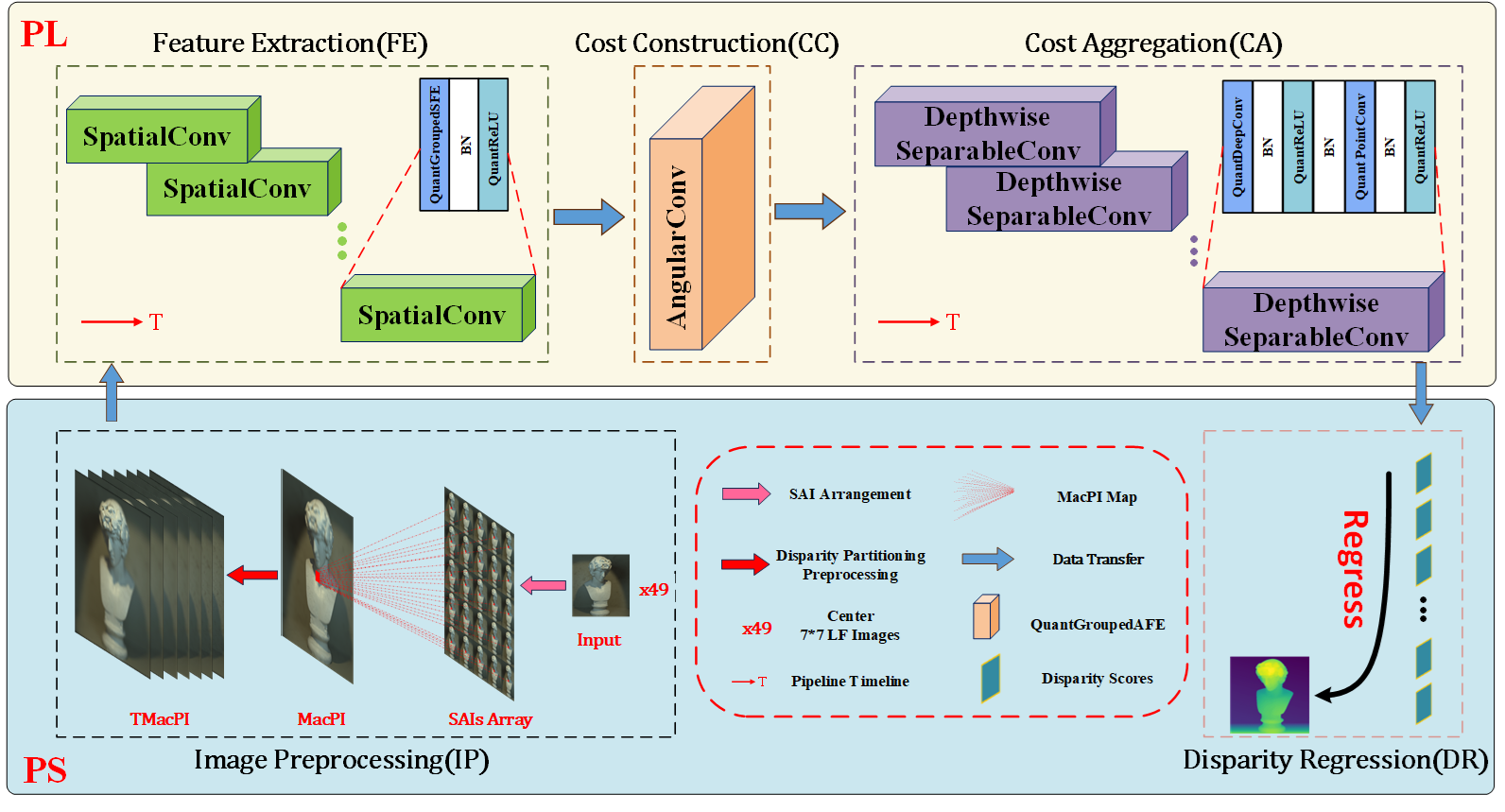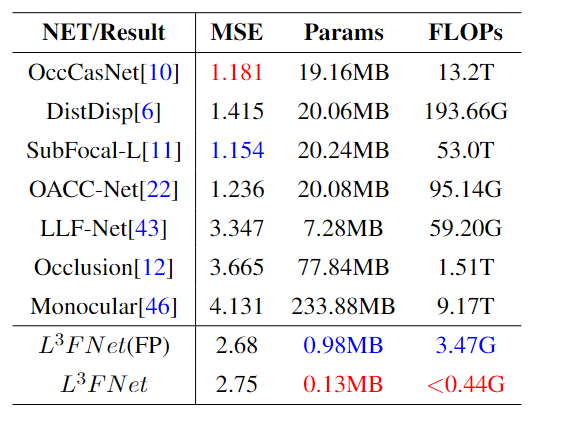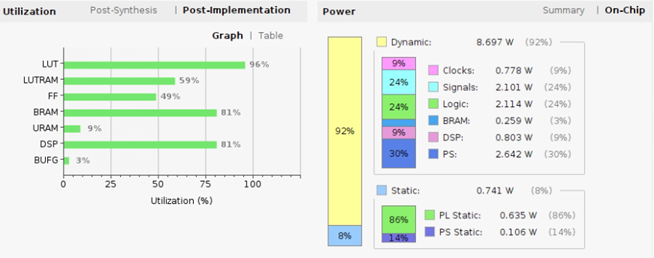- PyTorch 1.3.0, torchvision 0.4.1. The code is tested with python=3.8, cuda=11.0.
- A GPU with enough memory
- We used the HCI 4D LF benchmark for training and evaluation. Please refer to the benchmark website for details.
-
./dataset
- training
Location of the training data. - validation
Verify where the data is stored.
- training
-
./Figure
- paper_picture
Images from the paper. - hardware_picture
Hardware design picture.
- paper_picture
-
./Hardware
A file containing a series of hardware for the L3FNe and ablation experimental groups.- L3FNet
It contains the bit files and the hwh files for hardware, and the project code for PYNQ implementation. - Net_prune
Contains the bit files and the hwh files for hardware. - Net_w2bit
Contains the bit files and the hwh files for hardware. - Net_w8bit
Contains the bit files and the hwh files for hardware.
- L3FNet
-
./implement
L3FNet implementation files and data preprocessing file on Pytorch. -
./jupyter
Network execution scripts, as well as some algorithm implementation scripts. -
./log
Log files that record the accuracy of each verification scenario during verification. -
./loss
loss Drop image, recording the loss for each validation. -
./model
Network and regular functions to call. -
./param
The checkpoint of the networks is stored here. -
./Results
Store network test results, pfm files and converted png files.- our network
- Net_Full
- Net_Quant
- Necessity analysis
- Net_3D
- Net_99
- Net_Undpp
- Performance improvement analysis
- Net_Unprune
- Net_8bit
- Net_w2bit
- Net_w8bit
- Net_prune
- our network
-
Set the hyper-parameters in parse_args() if needed. We have provided our default settings in the realeased codes.
-
You can train the network by calling implement.py and giving the mode attribute to train.
python ../implement/implement.py --net Net_Full --n_epochs 3000 --mode train --device cuda:1 -
Checkpoint will be saved to ./param/'NetName'.
- After loading the weight file used by your domain, you can call implement.py and giving the mode attribute to valid or test.
- The result files (i.e., scene_name.pfm) will be saved to ./Results/'NetName'.
- ZCU104 platform
- A memory card with PYNQ installed.
For details on the initialization of PYNQ on ZCU104, please refer to the Chinese version of the blog "PYNQ". - Vivado Tool Kit (vivado, HLS, etc.)
- An Ubuntu with more than 16GB of memory (the Vivado tool is faster when used in Ubuntu)
See './Figure/hardware_picture/top.pdf'
If you find this work helpful, please consider citing:
Our paper is currently under submission
Welcome to raise issues or email to Chuanlun Zhang(specialzhangsan@gmail.com or zcl_20000718@163.com) for any question regarding this work




